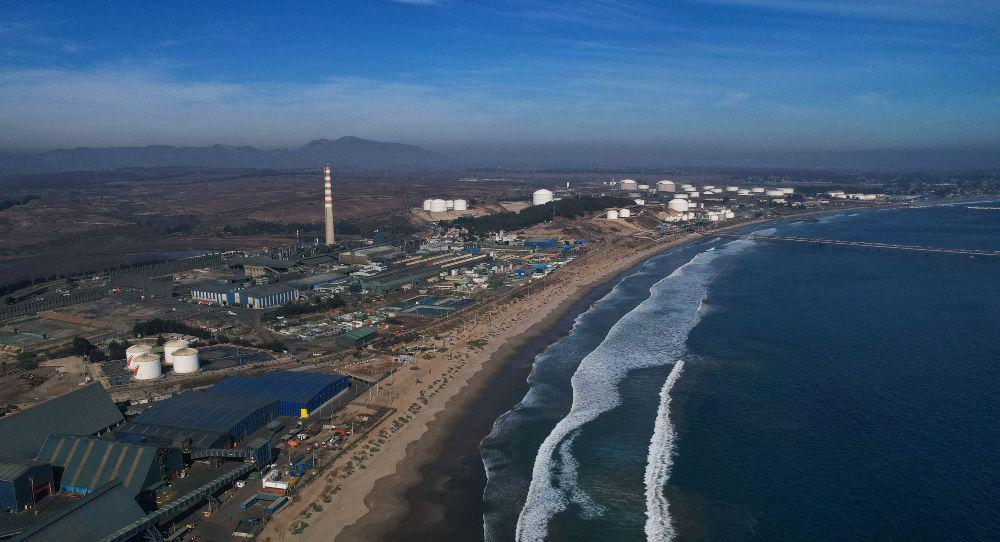“What is the EU’s value proposition?” an official working at Chile’s Ministry of Mines asked me on my recent trip to the country.
Over the past years, I’ve heard this question everywhere, from Namibia to Kazakhstan, and from Serbia to the Democratic Republic of Congo. The people asking were dealing with the supply of critical minerals key for the energy transition, digitalization, and military equipment in the EU and beyond.
Those minerals—anything from light and heavy rare earths to chromium and now copper—are at the heart of a geopolitical and geo-economic competition that connects the energy transition to the hardware supporting innovation in artificial intelligence. This means one thing: all energy-intensive countries and regional blocs have an interest in them.
The demand these minerals feed into this new competitive landscape means they are tacitly wrapped in a geo-economic auctioning process that will determine whether the international community, and indeed the planet, enters a race to the bottom or to the top.
The EU’s ability to navigate this global competition and identify a European way forward will not only determine the fate of its own decarbonization process. It could also serve to deescalate geopolitical and geo-economic competition that is no longer sustainable on a planet in ecological overshoot. Small stakes, if one was ever in doubt!
In this auctioning process, the EU’s bid remains unclear. It took Russia’s war in Ukraine for the bloc to finally equip its Green Deal with an international strategy. From there, the EU worked on its Critical Raw Materials (CRM) Act and Net Zero Industry Act. These are the catalysts for negotiations with supply countries.
At last, they lay bare the EU’s material dependencies: Europe’s energy, climate, and, therefore, economic security is literally sourced from outside its borders. Specifically, it comes from countries that provide mitigation assets in Latin America, Africa, Central Asia, the Balkans, and the Indo Pacific. These countries are pivotal: They are the arbiters of the energy transition, its pace, and of the future collective security order.
This entirely flips the EU’s climate leadership narrative on its head. Over the last decade, the EU has been working on legislation and standards designed to trailblaze climate action. But its ability to deliver on this is largely enabled by countries who bear the burden of high-emitting industrial activities and forego much of their natural capital to deliver the energy transition. By supplying the world with mitigation assets, these countries may benefit economically, but they simultaneously borrow from their adaptation budget, at their sole cost—at least for now.
Indeed, the countries at the epicenter of the new wave of extractivism are also among the most climate-vulnerable and water-stressed. They will be worst hit should we reach 1.5° Celsius climate target in less than five years.
In the meantime, climate finance is still lagging behind, leading to trust deficits at the heart of the multilateral and financial system. Those, in turn, feed into systems rivalry, in which the EU is currently losing credibility.
So far, both the EU’s CRM and Net Zero Industry Act focus on derisking international supply chains by promoting “sustainable growth and contribut(ing) to resilient raw materials and industrial value chains […] leverag[ing] integration of the industrial and materials value chains between the EU and the partner country.”
By investing into its partners’ economic value-add, the EU’s ultimate aim is to lessen dependencies on systems rivals—China and Russia. These are undeniably critical goals, but they serve a narrow European interest for energy security, which is disconnected from the larger stakes at hand. This is one of the main reasons why the EU is often accused of hypocrisy and double standards by countries in the so-called Global South.
What is derisking, then, for the EU’s strategic partners?
The promise that investing in the industrial capacity necessary for the world’s—including the EU’s—transition today will not cost them their ability to adapt and thrive tomorrow.
If the EU is to differentiate itself from its competitors’ transactional offers, it should move toward derisking global supply chains by co-designing an integrated approach with its strategic partners, which would include mitigation, adaptation, regeneration, and economic transformation opportunities. Doing so will not only strengthen its proposition to strategic mineral partners but also deliver the dual benefits of mitigation assets for Europe’s decarbonized energy security and a just energy transition.
What does this entail? A wide and multi-dimensional strategy, which involves the following:
First, the EU must couple extraction with regeneration. This entails activating water diplomacy efforts such as investing in water-retention landscapes at scale, essential to both enabling industrial expansion in water-stressed areas and international adaptation.
Second, it must support partners to deliver their own decarbonized energy security strategies. This requires a regional approach, not just a national one.
Third, the EU should support transition and adaptation research focused on the future of economic adaptability in countries that will suffer severe climate disruptions. In contexts like Chile, where it is uncertain whether mining can continue to expand alongside intensive agriculture, deforestation, and other nature-depleting economic activities, what does economic transformation and adaptation look like? Based on investigating this oft-disregarded question, the EU and partners will be ready to explore what economic interdependencies will underpin economic security within planetary boundaries.
In short, the future of the EU’s decarbonized energy security lies in its ability to broaden and strengthen its proposition to its strategic partnerships. It requires derisking supply chains and co-designing economic, climate, and ecological transformations together. It requires contextualising its offer within climate and ecological security.
By doing so, Europe has an opportunity to not only de-escalate geopolitical and geo-economic competition among systems rivals but also to help deliver a new security architecture suitable for a climate-disrupted world.


.jpg)
.jpg)


